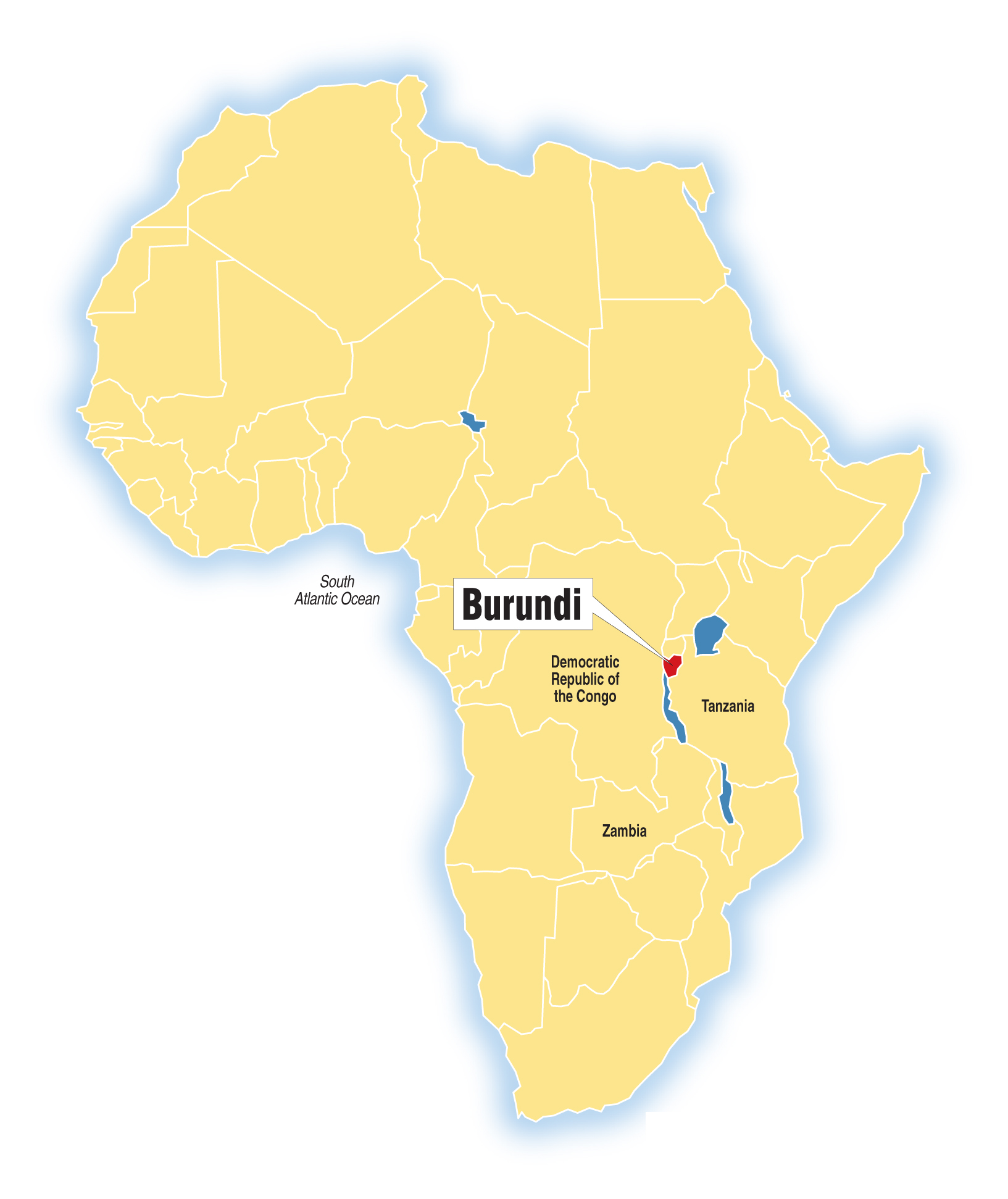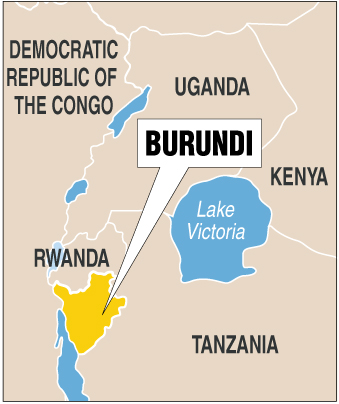ABOUT BURUNDI
• Size: Slightly smaller than Maryland
• Population: 10.5 million
• 46 percent of the population is 14 years old or younger
• Eighth-highest birth rate in the world with 40.58 births/1,000 population
• Sixth-highest maternal mortality rate in the world with 970 deaths/100,000 live births
• Almost 40 percent of children under the age of 5 are underweight, sixth- highest in the world
• About 70 percent of the population lives below the poverty line.
• Less than 2 percent of the population has electricity in their homes.
• Foreign aid represents 42 percent of its national income, the second-highest rate in Sub-Saharan Africa.
Source: U.S. Central Intelligence Agency World Factbook
ABOUT BURUNDIAN NAMES
• The notion of family name is a foreign concept to most Burundians. What they call now the "last name" was meant to reflect either the peculiar circumstance of the newborn, the character or personality that she/he would display during the first month of her/ his life - the name was given at least 30 days after birth - or the parents' wishes about her/his future life.
• The colonial masters introduced the concept of a first name, for example a Christian name that was given at baptism. From the end of the 19th Century to the end of World War I, the Catholic Church popularized the practice of giving the Christian name to newborns.
• Vasita's name, Hakizimana, means God saves or protects. James' name, Girukwayo, means God has His ways of doing things. The rest of their children's names also are related to God.
Source: Pierre Nzokizwa, Burundi native and professor at Southern Adventist University
BURUNDI'S VIOLENT HISTORY
The difference between Hutus and the Tutsis, Burundi's two main ethnic groups, is anything but clear. Some historians argue that it's more of an economic difference than ethnic. In Burundi, the minority Tutsi population for the most part ruled the majority Hutu.
The history of Burundi's ethnic wars is also up for debate. One problem is that history has become a political tool.
Ethnicity was used in the struggles for power, especially after Prince Louis Rwagasore was killed in 1961. Rwagasore married a Hutu and was immensely popular with both ethnic groups. Some believe the Belgians conspired in his murder.
Brief timeline through Burundi's conflicts:
• 1962 - Burundi gains its independence from Belgium.
• 1965 - A failed Hutu gendarmerie coup d' etat led to exemplary retribution with thousands dead. Burundi had almost three decades of military rule by Tutsis.
• 1972 - Uprising by Hutu and Congolese rebels, during which Tutsis were killed, the army went on a two-month pogrom, systematically killing all educated Hutu throughout the country. The ethnic war between Hutus and Tutsis resulted in the deaths of some 200,000 Burundians and triggered the flight of about 150,000 refugees to Rwanda, Tanzania and Congo.
• 1988 - Hutu mobs organized by a clandestine radical movement born in Tanzanian refugee camps attacked local Tutsi in the north. Hundreds of Tutsis were killed. The army answered with indiscriminate massive reprisals.
• 1993 - The assassination of Burundi's first Hutu president triggered widespread ethnic fighting and the exodus of 500,000 more refugees. The civil war lasted more than a decade and resulted in another 200,000 deaths.
• 2012 - Thousands of Burundians living in Tanzania lose their refugee status and the guaranteed with aid that went with it. And Tanzania announces that its refugee camp hosting Burundians will close permanently by year's end.
Sources: Authors Peter Uvin and Tracy Kidder; Cultural Orientation Resource Center; news reports


